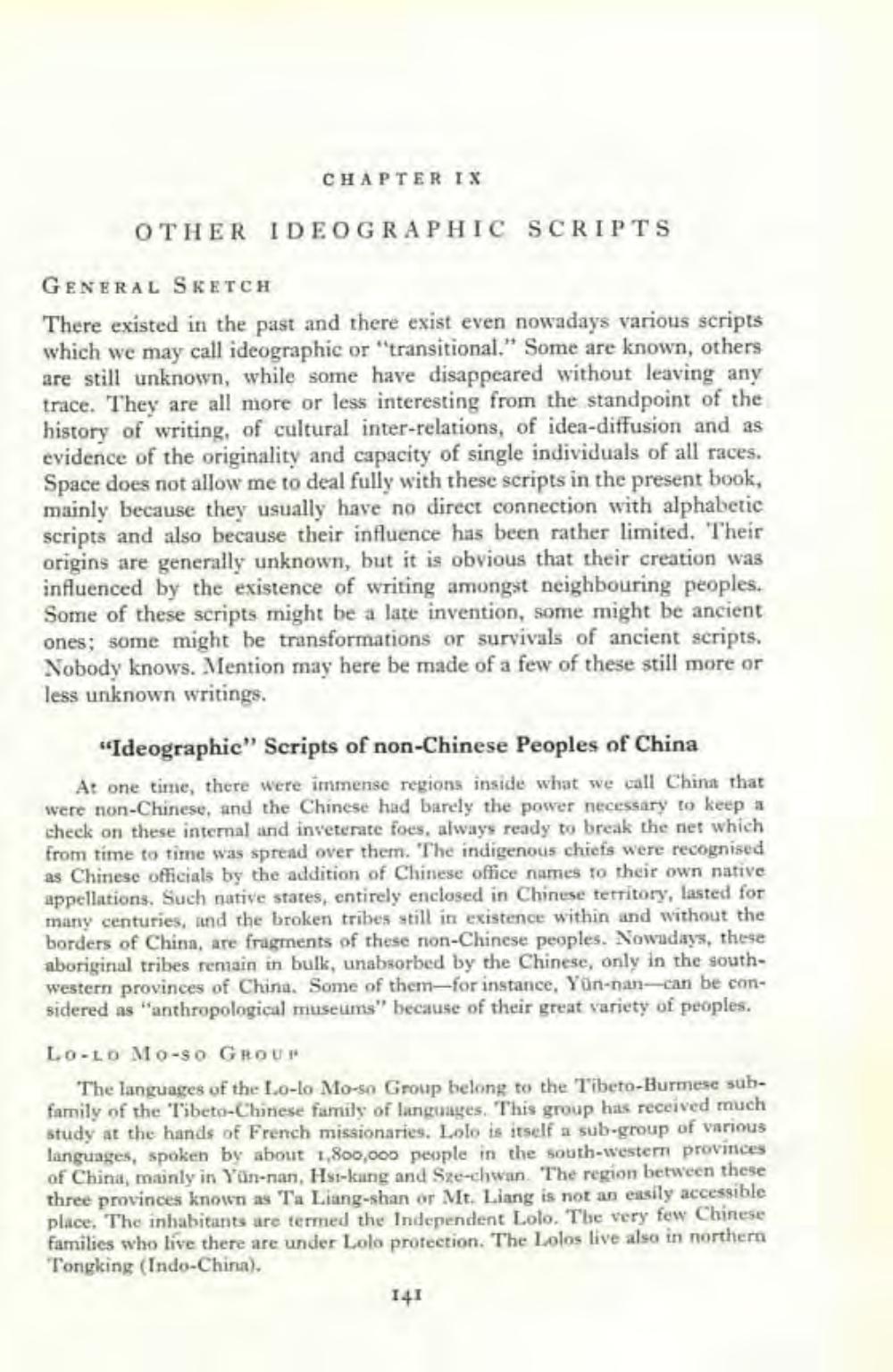________________
CHAPTERIX
OTHER IDEOGRAPHIC SCRIPTS
GENERAL SKETCH
There existed in the past and there exist even nowadays various scripts which we may call ideographic or "transitional." Some are known, others are still unknown, while some have disappeared without leaving any trace. They are all more or less interesting from the standpoint of the history of writing, of cultural inter-relations, of idea-diffusion and as evidence of the originality and capacity of single individuals of all races. Space does not allow me to deal fully with these scripts in the present book, mainly because they usually have no direct connection with alphabetic scripts and also because their influence has been rather limited. Their origins are generally unknown, but it is obvious that their creation was influenced by the existence of writing amongst neighbouring peoples. Some of these scripts might be a late invention, some might be ancient ones; some might be transformations or survivals of ancient scripts. Nobody knows. Mention may here be made of a few of these still more or less unknown writings.
"Ideographic" Scripts of non-Chinese Peoples of China At one time, there were immense regions inside what we call Chint that were non-Chinese, and the Chinese had barely the power necessary to keep a check on these internal and inveterate foes, always ready to break the net which from time to time was spread over them. The indigenous chiefs were recognised as Chinese officials by the addition of Chinese office names to their own native appellations. Such native states, entirely enclosed in Chinese territory, lasted for many centuries, and the broken tribes still in existence within and without the borders of China, are fragments of these non-Chinese peoples. Nowadays, these aboriginal tribes remain in bulk, unabsorbed by the Chinese, only in the southwestern provinces of China. Some of them for instance, Yün-nan-can be considered as "anthropological Museums" because of their great variety of peoples.
LO-LO Mo-so GROUP
The languages of the Lo-lo Mo-so Group belong to the Tibeto-Burmese subfamily of the Tibeto-Chinese family of languages. This group has received much Study at the hands of French missionaries. Lolo is itself a sub-group of various languages, spoken by about 1,800,000 people in the south-western provinces of China, mainly in Yün-nan, Hsi-kung and Sze-chwan. The region between these three provinces known as Ta Liang-shan or Mt. Liang is not an easily accessible place. The inhabitants are termed the Independent Lolo, The very few Chinese families who live there are under Lolo protection. The Lolos live also in northern Tongking (Indo-China).
141




